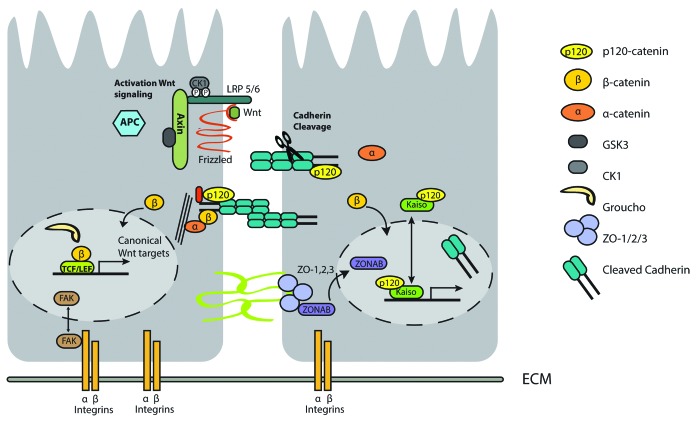Figure 3. Dual role of proteins in adhesion complexes and transcription regulation. In absence of wnt signaling, β-catenin is degraded by the APC-destruction complex, whereas in presence of wnt signaling, degradation of β-catenin by APC is prevented and β-catenin activates TCF/LEF-mediated transcription (Left panel). Disruption of E-cadherin signaling by, for example, ADAM10-mediated cleavage of E-cadherin, results in nuclear translocation of β-catenin, and subsequent activation of the Wnt signaling pathway. However, following complete disintegration of the E-cadherin complex, the cytoplasmic domain of E-cadherin, derived after proteolytic cleavage and in addition p120ctn, may also translocate to the nucleus (Right panel). Combined or in isolation this nuclear shuttling of E-cadherin complex proteins may have different biological outcome. Multiple signals, like stress signals can result in nuclear localization of FAK, a key component of integrin signaling (left panel).

An official website of the United States government
Here's how you know
Official websites use .gov
A
.gov website belongs to an official
government organization in the United States.
Secure .gov websites use HTTPS
A lock (
) or https:// means you've safely
connected to the .gov website. Share sensitive
information only on official, secure websites.
